Track leads from SEO in Duda
Learn how to use a tool called Attributer to track how many leads you get from your SEO efforts in Duda

Struggling to track how many leads and customers you’re getting from your SEO efforts?
You’re not alone. While tools like Google Analytics can tell you how many people visited your site from organic search, they fall short when it comes to showing how many of those visitors actually became leads or customers.
Fortunately, there’s a better way.
In this article, we’ll show you how to use a tool called Attributer to capture SEO attribution data with every form submission in Duda. Plus, we’ll walk you through a few example reports that clearly show how many leads and customers your SEO efforts are really driving.
4 steps to track leads & customers from SEO in Duda
It’s easy to track how many leads you get from SEO when you use Attributer with Duda. Here’s how it works:
1. Install Attributer on your website

When you start your 14-day free trial of Attributer, you’ll be given a small snippet of code to add to your website.
If you’re using a builder like Duda, you can paste the code into the Site Settings under the Head HTML section. Alternatively, tools like Google Tag Manager can also be used to install the snippet.
Need help? You can find step-by-step guides for all major website platforms (including Duda, WordPress, Wix, Webflow, and more) right here.
2. Add hidden fields to your forms
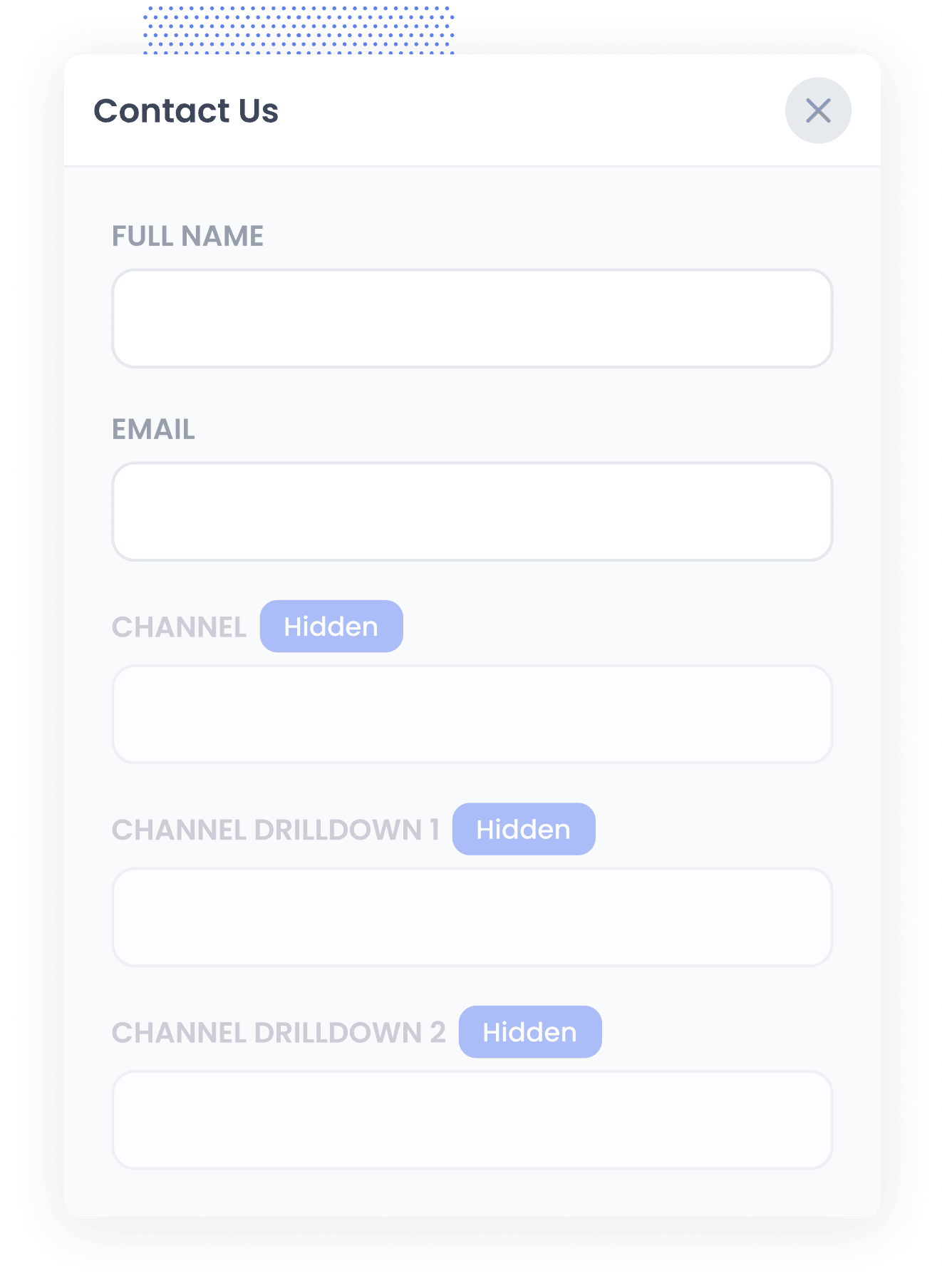
Once the code is installed on your site, the next step is to add a series of hidden fields to your lead capture forms. These fields are:
- Channel
- Channel Drilldown 1
- Channel Drilldown 2
- Channel Drilldown 3
- Landing Page
- Landing Page Group
In Duda, you can add hidden fields by using the built-in form widget. Here’s a step-by-step guide to walk you through the process.
3. Attributer writes SEO data into the hidden fields
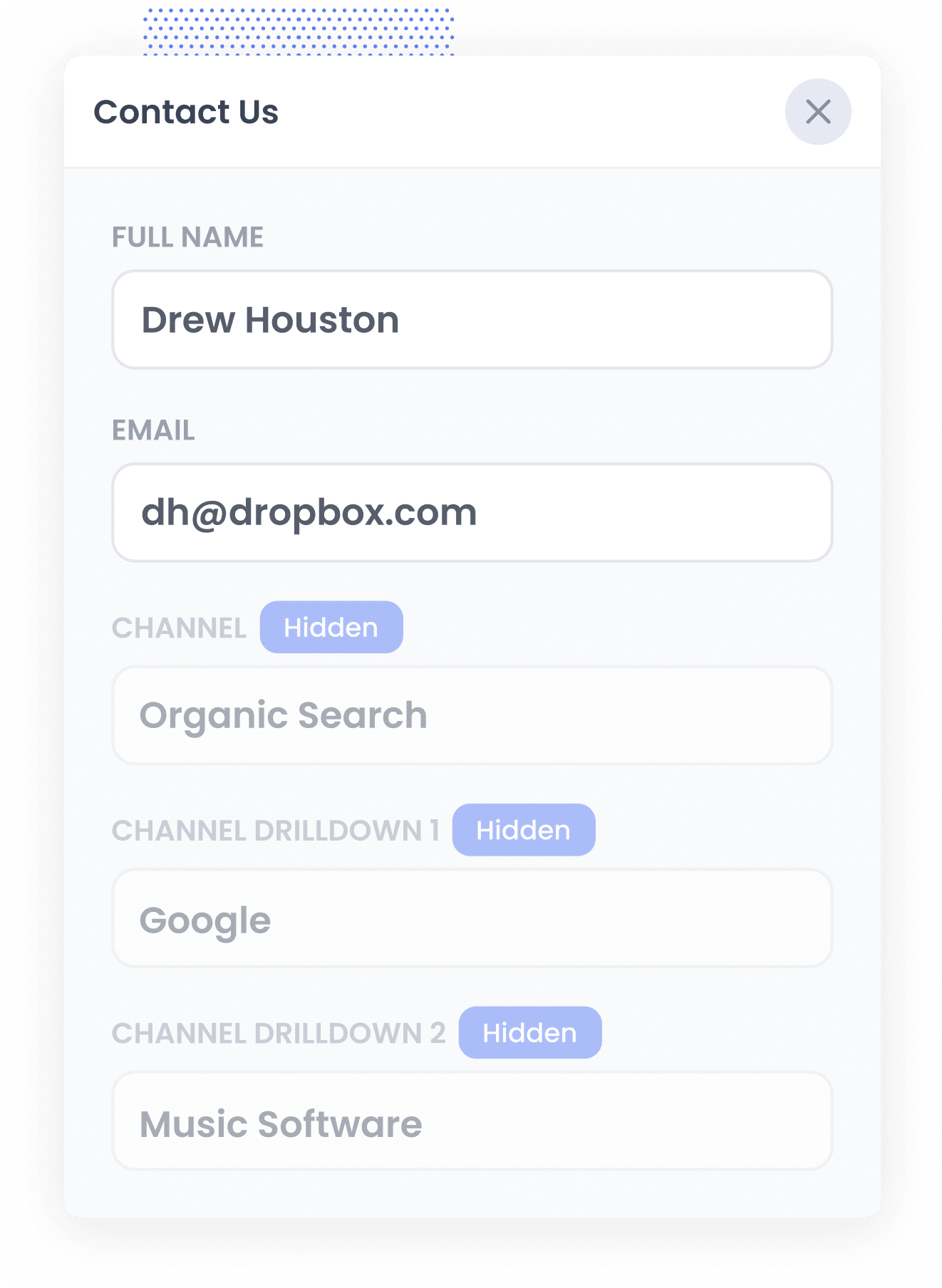
When someone lands on your website, Attributer analyses key details to determine how they found you.
It then assigns that visitor to a specific channel, such as Organic Search, Paid Social, or Referral, and stores this data in their browser.
Later, if that person fills out a form on your Duda site (like a Contact Us or Get a Quote form), Attributer automatically populates the hidden fields with information about where they came from, such as the channel (e.g. Organic Search), the source (e.g. Google), and even the keyword they searched for (when available).
4. SEO data is captured with each lead
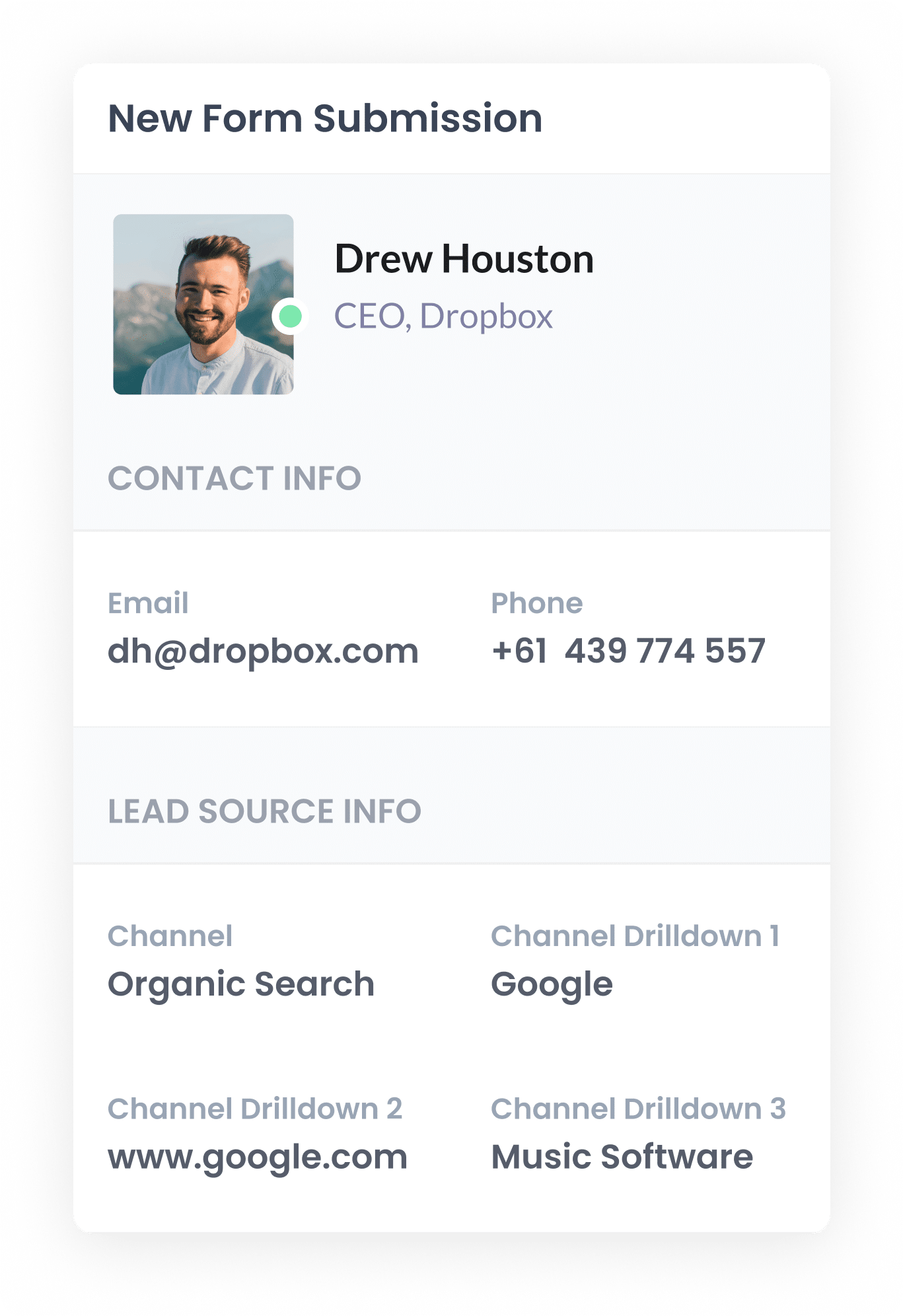
When someone submits a form on your Duda website, all the data that Attributer populated in the hidden fields, like how they found you through Organic Search, is captured alongside the lead’s details (name, email, etc.).
From there, you can view this information in your form submissions, include it in notification emails, pass it to your CRM, or even send it to a spreadsheet or dashboard tool for further analysis.
What data gets captured
Attributer passes through two types of data on your leads: information on how they got to your site (channel) and what content attracted them there (landing page).
For example, if you were part of the marketing team at a law firm and someone came to your site from an organic Google search, the following data would be passed through.
- Channel = Paid Search
- Channel Drilldown 1 = Google
- Channel Drilldown 2 = www.google.com (or the domain they came from, like google.com.au or google.co.uk)
- Channel Drilldown 3: contract law firm in Sydney (or the keyword they searched for, when it’s available)
You would also get information on what page they landed on. Continuing the example above, it might look a bit like this:
- Landing Page = abbottslaw.com/blog/contract-lawyers-sydney
- Landing Page Group = /blog
This landing page information can help you understand what content on your website is attracting leads from organic search (and, as a result, what content you should create more of).
What you can do with the data
Once the organic search data has been captured by Duda forms, you can use it in several powerful ways:
- View it in your dashboard: Access each form submission in Duda and see the full details, including where the lead came from.
- Include it in email notifications: Add the organic search data to your notification emails so you can see the source of every lead right in your inbox.
- Send it to your CRM: Push the data into platforms like Salesforce, Pipedrive, Hubspot, and more to track how SEO is contributing to your lead & customer numbers.
- Export to a spreadsheet: Export the information to Google Sheets or Excel to build charts that show how many leads & customers you're getting form your SEO efforts.
3 example reports you can run when you capture organic search data in Duda
Over the past 15 years working in marketing, I’ve spent countless hours immersed in SEO. I’ve run hundreds of reports to understand what’s working, what’s not and where to focus next.
Below are three of the reports I’ve relied on time and time again to measure the impact of our SEO efforts.
1. Leads by Channel
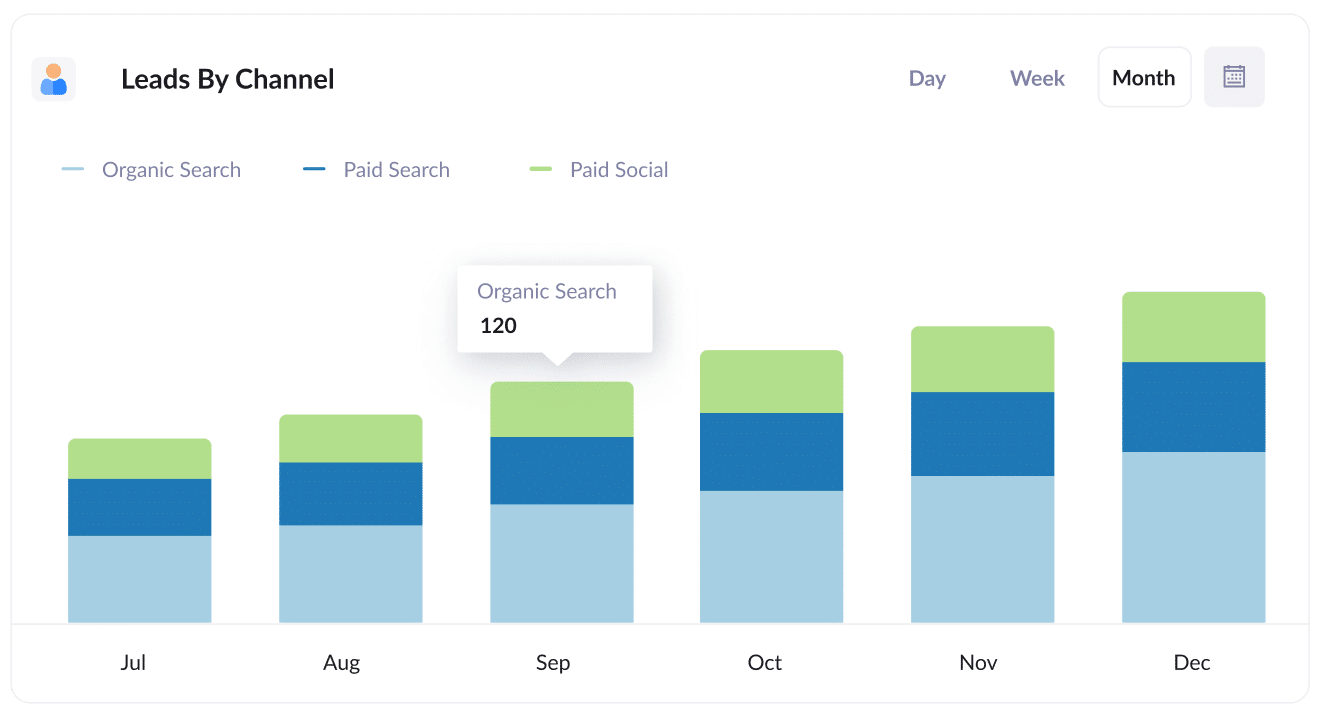
This report shows the number of leads your business receives each month, grouped by the channel they originated from, such as Organic Search, Paid Search, or Paid Social.
It’s a great way to get a clear, high-level picture of how your SEO is tracking and whether those efforts are actually driving leads.
I also use this report to spot opportunities. For example, if Organic Search is outperforming Paid Search in lead volume, but the budget is still weighted toward paid ads, it could be time to shift resources and double down on SEO.
2. Leads from Organic Search by Landing Page Group
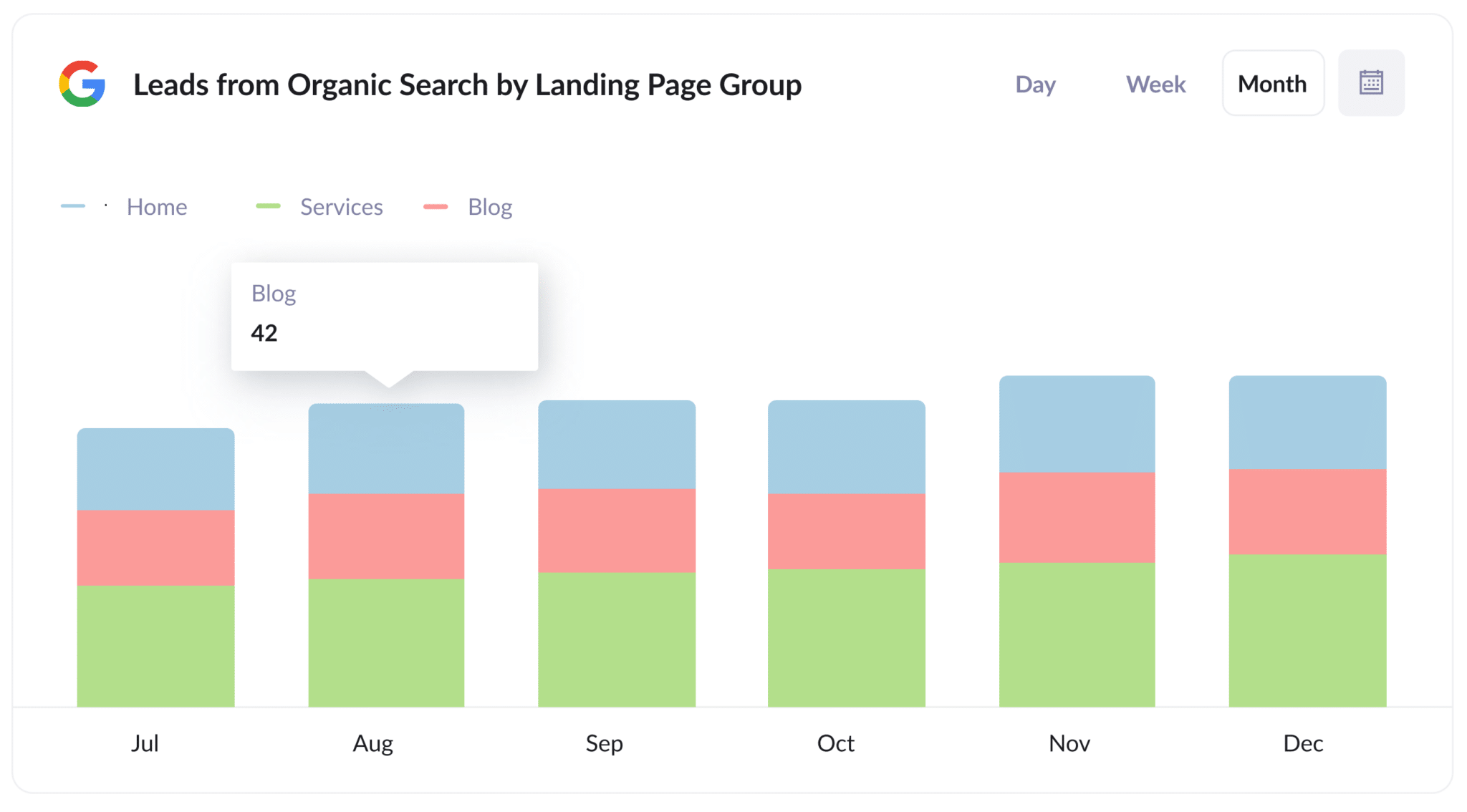
This report outlines how many new leads are coming from organic search each month, segmented by the section of your website they landed on, such as your Blog, Services, or Home page.
It gives you valuable insight into which areas of your site are generating the most leads from organic search.
Armed with this information, you can make smarter decisions about where to focus your content creation efforts.
3. Leads from Organic Search by Landing Page
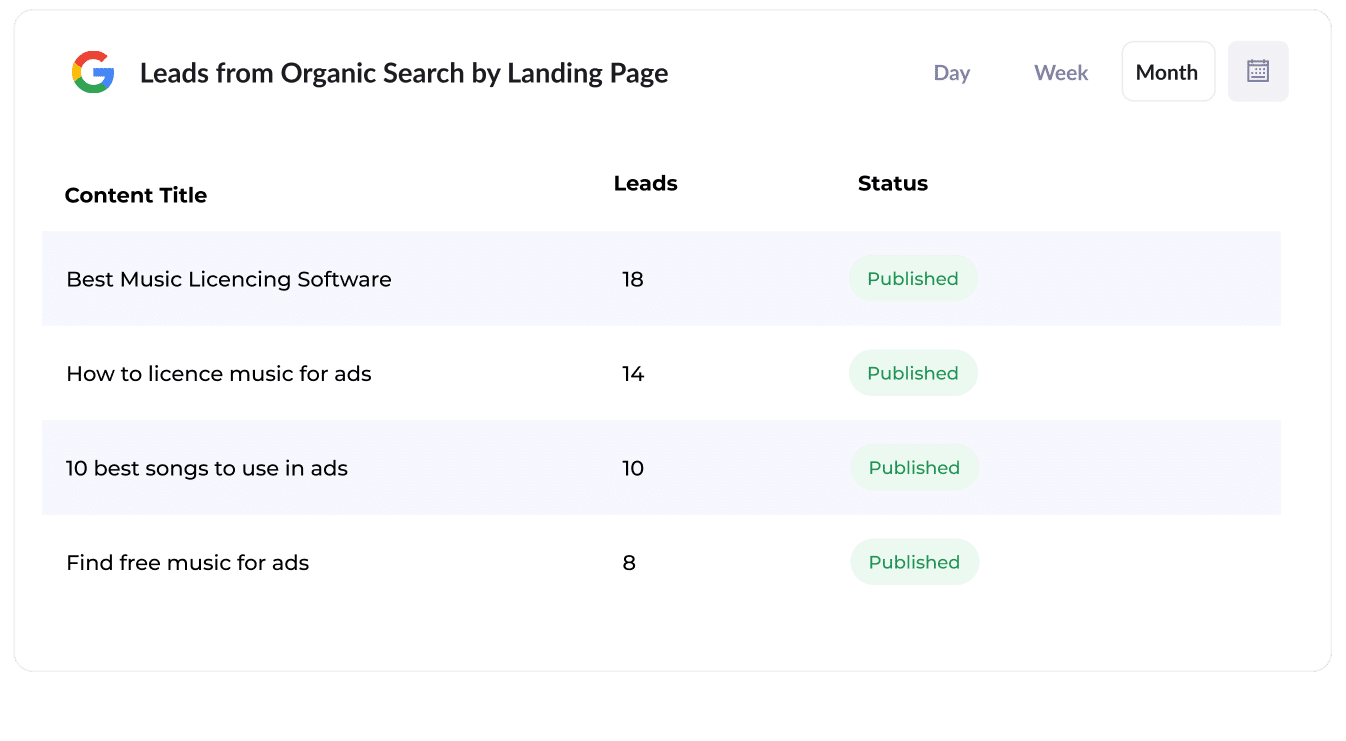
This report breaks down the number of new leads generated by each individual piece of content on your website, such as specific blog posts, articles, or landing pages.
It clearly highlights which topics and formats are driving the most leads, helping you pinpoint what’s resonating with your audience.
With these insights, you can double down on the content that works and make more strategic decisions about what to produce next.
Wrap Up
If you’ve been trying to figure out exactly how many leads your SEO efforts are bringing in, and how that’s trending over time, then pairing Attributer with your Duda forms is a smart move.
The best part? You can try Attributer free for 14 days, and setup typically takes under 10 minutes. Give it a go and start tracking your SEO leads today!
Get Started For Free
Start your 14-day free trial of Attributer today!

About the Author
Aaron Beashel is the founder of Attributer and has over 15 years of experience in marketing & analytics. He is a recognized expert in the subject and has written articles for leading websites such as Hubspot, Zapier, Search Engine Journal, Buffer, Unbounce & more. Learn more about Aaron here.
